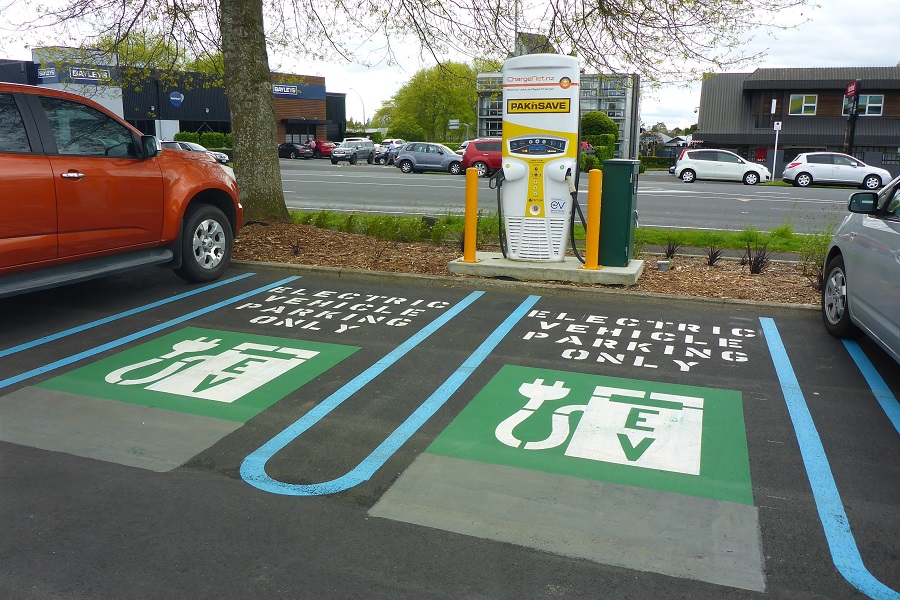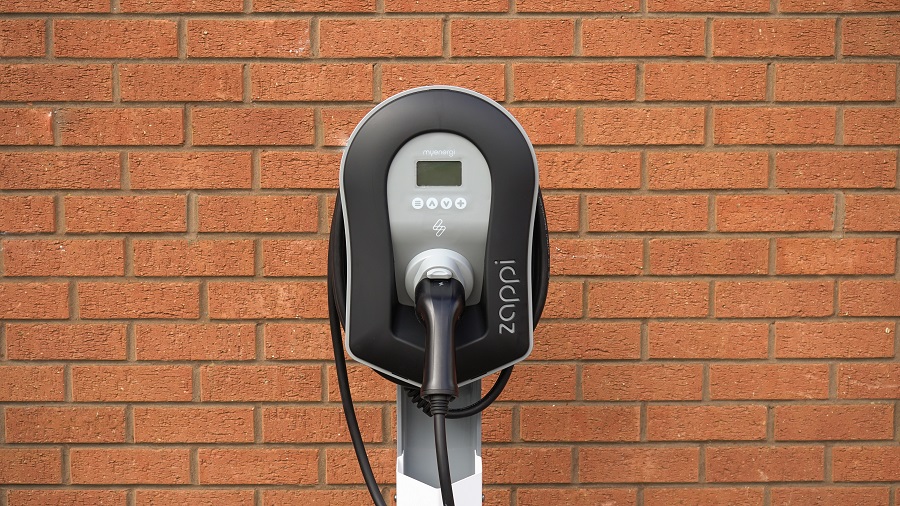Thinking about buying a new (or used) car is a big decision for most people. It is one of the biggest purchases people make in terms of expense and ownership time. The options can be daunting especially if you are adding on the prospect of trying something less mainstream like an electric vehicle.
Electric vehicles (EVs) are all the rage now as people are thinking about climate change. Many cities around the world plan to phase out gas and diesel cars over the next few decades. EVs are better for the environment because they do not have any tailpipe emissions of greenhouse gases that contribute to global warming.

There are just a few things you need to know about electric vehicles before you decide if making the switch to an electric car is right for you.
Things you should learn about electric vehicles before you buy one:
- electric vehicles typically require less engine maintenance but they are harder on tires so regular checks of air pressure is more important
- electric vehicles have their own environmental impact; if you are buying one for environmental reason, make sure you understand the whole picture
- there are many different types of electric cars; conventional hybrid, PHEV, BEV, FCEV have their own advantages and disadvantages so make sure you know which type suits you best
- charging stations are not all the same and not all electric cars can be used at them; be sure to learn about which car you will get and where you can charge them around the places you will drive
- the charging time can range from 30 minutes to multiple hours depending on the type of car and the type of charging station
- you might be able to retrofit your existing car with an electric engine instead of purchasing a new electric vehicle
- all batteries do not perform well in extreme cold or heat and the charge on an electric car can decrease depending on the weather
- although electric cars are considered safer overall compared to a combustion engine car, they have their own safety issues to know about
- the upfront cost of an electric vehicle is usually larger than an combustion car but make sure you do the cost analysis on owning the car for several years in terms of fuel costs and maintenance as well as rebates
If you want to learn more about the above points, keep reading!
The Different Types of Electric Cars – PHEV, BEV, FCEV
There are many types of electric vehicles (EVs). When researching an electric vehicle, you might come across the acronyms HEV, PHEV, BEV and FCEV. It is important to know the difference as it will make your research much easier when you recognize these types.
A conventional car uses an internal combustion engine (ICE). They require gasoline, biofuel or diesel to run the engine and they emit greenhouse gases via the tailpipe. The advantages to driving a typical combustion are that they are cheaper to purchase initially, there is a great network of gas stations available, they have a long range on a tank, they fill up quickly and they can work in cold or hot weather.
A conventional hybrid car combines a combustion engine with an electric motor working together at the same time to power the vehicle. The fuel in this car is used to help run the motor AND to power the electric motor. This car cannot be plugged in to charge the battery. The advantages to conventional hybrid cars is that they have less emissions than a combustion car while still being quick and easy to fill, they have long range on a tank and they work well in hot or cold weather.

But there is another type of hybrid vehicle, the PHEV (Plug-in Hybrid Electric Vehicle). The difference between a conventional hybrid and a PHEV is that the battery of the PHEV is charged by plugging it into an outlet as opposed to fuel generated. The electric motor of the PHEV is used primarily and then when the battery runs out, the fuel engine kicks in as a backup. This gives the vehicle the flexibility to use the vehicle like a full electric (no emissions, no fuel required) or like a combustion car in cases where there isn’t time or the place to recharge the battery.
A BEV is a Battery Electric Vehicle. The BEV uses an electric motor that is only charged by plugging it in. There is not an additional backup combustion engine. The main advantages to this type of car are low maintenance (because it is one simple electric engine) and no emissions (depending on how the electricity is generated).
An FCEV is a fuel cell electric vehicle. This car uses compressed hydrogen stored in the car together with oxygen from the air to produce the power needed to run the car. The byproducts of this reaction are heat and water, therefor it is considered to have zero emissions (although the production of compressed hydrogen may incur some emissions through production and transportation). There aren’t very many recharging stations around the world and this technology doesn’t seem to be catching on.
| Pros | Plug-in | Emissions* | |
| Conventional Car Internal Combustion Engine (ICE) | – easy to find gas station – refills quickly – long range on a tank | no | high |
| Conventional Hybrid | – less emissions than ICE – easy to find gas station – refills quickly – long range on a tank | no | low |
| PHEV Plug-in Hybrid Electric Vehicle | – option | yes | low to none |
| BEV Battery Electric Vehicle | – low maintenance – no emissions | yes | none |
| FCEV Fuel Cell Electric Vehicle | – no emissions from driving (but some from producing compressed hydrogen | no | low |
Factors that you might consider when selecting which type of electric vehicle you want to purchase are:
- where will you drive it? do you have access to an electrical charger
- how far will you drive between charges
- how much time will you have to charge a battery
- what is the weather in the locations that you will drive the car
Maintanence Is Different For Electric Cars
You may have heard that there is less maintenance required for an electric vehicle. This is true for the engine: no oil changes, air or fuel filters, timing belt or spark plugs need to be replaced.
Electric motors have a very different braking system. The brakes are applied when the foot comes off the acceleration by putting the engine into reverse. This saves the brakes from being needed as much as they are in a ICE car.
But there are different maintenance issues to consider with an electric vehicle.
Tire Maintenance
Electric vehicles have a reputation for wearing out tires faster than a conventional fuel car. Two factors contribute to this: the batteries in electric cars cause the car to be 20 – 30 percent heavier and the electric engine provides more torque which can quickly burn out a tire.

But with the proper care, you can increase the life span of tires on an electric vehicle.
Make sure to get the appropriate tires for your driving location, weather and season. It is usually better to swap a summer and winter tire if you live in an area that has full seasons as opposed to one all season tire. By doing this swap twice a year, you can also be sure to rotate and align the tires as electric cars have a tenancy to wear out the inside edge of a tire. But your car might require a rotation even more often than the seasonal change.
It is recommended that you check the tire pressure of your car once per month. The tire pressure can prevent tire wear and keep the car running smoothly.
Battery Maintenance
The biggest difference between an internal combustion engine vehicle and the electric vehicle is the battery. The EV has a very large battery that needs to be monitored and properly used. All batteries will degrade over time and EV batteries will lose range on a charge over time. But if you understand the battery, you can increase the lifespan of the battery significantly.
A battery that is fully charged or empty for too long, can degrade. It is recommended that the battery is kept between 20 – 80 percent especially if you aren’t using it for a longer period of time.
The battery should only be fully charged when you are about to drive a long distance.
There are different types of charging stations to charge the battery of an EV: rapid, fast and slow. You should avoid using the rapid and fast charges too frequently as they also degrade the battery.
Fluid Maintenance
Electric engines do not require oil changes but some of the other fluids are more important to keep in tip top shape.
Some electric vehicles have a liquid thermal management system that keeps the battery cool. This is extremely important as the very large battery can combust when overheated (this is not common). So make sure to check and replace the coolant regularly.
Brakes on an electric car last longer because of the way the engine works. When the brakes are pressed, the motor goes into reverse to slow the car’s wheels. Brake pads last much longer this way causing less maintenance to be required. But don’t let that make you over look the brake fluid which still needs to be maintained on a regular basis.
update the Software
Something most people don’t really think about when they think about car maintenance is software updates. Some cars like Tesla, have over the air (OTA) software updates so maintaining your car’s software is very easy. But for many people, these updates are unwanted.
Tesla has the ability to make changes to the way your car drives, or make recommendations about how you should drive. In one update, they added more alerts to force drivers to keep their hands on the steering wheel. In another they added speed limits. Now Tesla is threatening to remove some of the car’s features from owners that refuse to get the updates.
Other updates like the one from Jaguar in December 2019, gives the car extended vehicle range by up to 8 percent. This was also done OTA making it very easy for the owners to get.
For other electric vehicles, when a software update is available, the car might need to be taken to a dealer to receive the update.
Environmental Impact of an Electric Car
The main reason that most people choose to purchase an electric car is to decrease their carbon footprint. Personal vehicles account for almost 20 percent of the total carbon emissions in the United States. Globally cars account for about 10 percent of direct emissions which is larger than the 3 percent that total global air traffic emits.
As the world moves away from internal combustion engines for automobiles, the electric vehicle industry is becoming more popular. Many cities around the world plan to ban the sale of diesel in the near future thus decreasing the air pollution and noise pollution.
Although electric vehicles have zero emissions when driving, there is a carbon footprint associated with producing them. In fact when you look at the lifetime CO2 emissions from an electric car, over 33 percent comes from the production. But even with the production of an electric car being greater than that of it’s combustion counterpart, it still is a significantly greener option over the life of the car.
So what is it about the production of an electric vehicle that is bad?
Lithium Ion Batteries
Lithium ion batteries are used in electric vehicles that plug in. Although there is a limited amount of lithium deposits in the world, several studies have concluded that there is enough in the world to provide for the projected demand over the next hundred years. This will not be a limiting factor but the process of mining it causes water pollution, contaminates the soil and has been known to leak and poison surrounding communities.
Cobalt is another element that is used in the lithium ion batteries of many electric vehicles. Similar to lithium, the mining of cobalt has devastated mining regions with soil and water pollution as well as high incidences of lung disease and heart failure.
It is estimated that the global demand for cobalt will almost double by 2030. 50 percent of the mining of cobalt comes from the Democratic Republic of the Congo where the element is extracted by hand.
A recent law suit has named tech giants Apple, Microsoft and Tesla among others to be responsible for child labor and deaths of children in the cobalt mines of the DRC. These companies have knowingly acquired the cobalt from places where children are leaving school to earn about $2 per day to dig underground tunnels for cobalt rocks.
The battery used in an electric vehicle is much heavier than that of the combustion vehicle. In order to compensate and make the car lighter (so it will use less energy to move), EVs often use lighter materials like aluminum for the rest of the car. These materials often require more energy to mine and produce.
Rare-earth Metals Used In Electric Motors
The magnets used in many electric motors require a few rare-earth metals that are mainly found in China (48%), the United States (13%), and smaller deposits in Russia, Australia and Canada. Over the next 25 years, it is predicted that the demand for these rare -earth elements will increase by 700%.
China has a history of banning the sale of the rare-metal to countries that is it in conflict with. Shortly after China temporarily banned exports of all rare-earth elements to Japan in 2010, Toyota started developing an electric motor that does not rely on them.
Fine Particle Emissions Due To A Heavier Car
Cars not only create emissions from the tailpipe but they also cause non exhaust emission (NEE) of particle pollution from tires. The weight of electric vehicles is 20 to 30 percent higher than an internal combustion car because of the battery. This higher weight and higher torque drive causes an increase of tire emissions.
Tire wear is not regulated but tires shed 1.5 kgs of particulate over their lifespan. As the tire wears, both large and small particles are emitted leading to micro plastics in waters as well as ultra fines in air pollution. It was found that tires emit over 1,000 times the regulated tailpipe exhaust emission limits.
For some electric cars are part of the solution to stopping climate change but as you can see EVs come with their own issues. Others believe the concept of personal vehicles needs to be reconsidered and we need to move towards locality with physically active transport. The benefits would be numerous but it will take a big shift to get there.
Recharging Stations
Not all recharging stations for an electric vehicle are the same. All electric vehicles allow you to plug into a standard household outlet for the slowest speed of charge. This is called Level 1 charging.
But for a battery electric vehicle, a level 1 charge can take from 8 to 12 hours to completely charge a depleted battery. A plug in hybrid would be much faster.
A level 2 charging stations can be installed in a home or can be found for public use at stores and gas stations. These use 240 V / 30 Amps (similar to a stove or dryer) in your home. In Canada and the United States, the plugs on EVs are all the same so that any car can use any Level 2 station.
A full charge from a depleted battery on a level 2 charger will take from 4 to 6 hours.
Level 3 charges can be found at gas stations and often incur a fee. These are the fastest chargers but you should only charge up to 80% of the battery’s state of charge (SOC), after which the charging slows down significantly and will be very expensive. You can charge the battery up to 80% in about 30 minutes on a level 3 charger.
All cars come with the ability to charge at a level 1 and level 2 station (an adaptor with a household plug). The connectors for level 3 chargers differ depending on the car, the CHAdeMO and SAE Combo are common types that are not interchangeable. Tesla has a third type of connector that can only be used at Tesla charging stations.
Before purchasing an EV, make sure you know where the charging stations available for your car are located. There is a different network of level 3 chargers for each type of connector. There are several mobile apps used to map out all of the charging stations on your route making them easy to find.
Weather Conditions And Battery Range
Cold temperatures can cause the battery to under perform by about 20 percent. It also causes a decrease in regenerative braking thereby reducing the recharge available from braking. During cold temperatures, even charging may take longer, particularly fast charging.
One way to avoid the full effect of these cold temperature issues is to keep your battery above 20 percent. And you can use the power from the outlet to warm up the car before you drive away (just like you should warm up a fuel car before driving in extreme cold). Electric vehicles use their batteries to warm the car rather than using wasted heat from a combustion engine.
Hot temperatures are also draining on the batteries and can decrease the performance of the battery by 17 percent. This value was disputed by Tesla stating that in 95 degrees Fahrenheit, the decrease is only one percent.
When driving in extremely hot conditions it is best to pre cool the car before driving.
How Driving An Electric Car Is Different
Most combustion cars have five or six speeds that you can feel switch as you drive. An electric car has only one speed as opposed to 5 or 6 speeds. This gives an advantage because there is always full power to the car. When accelerating, the car doesn’t have any pauses for gear changes, it is simply a steady increase in power. One of the nicest parts about driving an electric car is the response time for the car to go from a stopped position to begin driving, there is no lag, it feels powerful.
Most electric cars have different modes to adjust how sensitive the acceleration is. You can choose a lower mode if you want to conserve the battery output or a higher mode if you want to have more power for the drive. There is a power meter that displays the amount of power being used at all times.
When you lift off the accelerator pedal, the car responds as if you were pressing the brake in a normal car and it slows down (even going down a hill). During this time, the car is using the drive motor to regenerate the battery in a process called regen braking. There are settings for this as well.
Some electric cars have a setting for just one pedal that will accelerate the car when pressed and stop the car when not pressed. If you want to stop quickly, you have to remove your foot from the pedal quickly.
Driving electric cars is very quiet and many people feel it is very relaxing. Most EVs have a sound that can be heard from outside the car, this is a fake sound used for alerting pedestrians that the car is driving.
Electric cars drive smoothly, efficiently, they are comfortable and responsive. They are great for short commutes but can also be used for long distances with a little planning.
Retrofit Your Car With An Electric Engine Instead
Many people have converted their internal combustion engine vehicles to an electric vehicle. There are companies that will do this for you or if you are handy you an buy a conversion kit to do it yourself.
Transition One is a company in France that transitions some of the most popular car models to have an electric motor. The cost of this service is much less than the cost of a new electric vehicle, somewhere in the range of $10,000.
The process of retrofitting a car to an EV involves removing the engine and gas tank and adding multiple battery packs into the hood of the car. The car needs to pass some safety tests in order to get insurance.
Safety
Electric cars are considered to be safe. In a study of car accidents, the number of cars that caught on fire was 2.6 percent for electric cars compared to 4.4 percent for internal combustion vehicles. When the car did catch fire, the fire was restricted only to the battery for the EVs but for the ICE vehicles some of them spread to other parts of the car.
Electric vehicles can catch fire from improperly charging the battery. Attempting to use a fast charger on a battery designed for slow charging can damage a battery. A damaged battery can overheat, thermal runaway can start a fire.
With periodic maintenance, the health of the battery can be detected and safety should not be an issue.
If an EV is in an accident, it is unlikely to explode but it can be very dangerous for first responders to use the jaws of life because of the risk of cutting a live wire.
Rebates
Make sure to check your country and state or province to find the rebates available to you for switching to an electric car. Some of these rebates are based off of the car that you have to retire if it is gas or diesel. These programs are always changing and sometimes they are limited to the first set number of people who apply, so don’t get lazy – apply for them right away.
Blue Nissan EV Photo by Jan Kaluza on Unsplash
Charger Photo by Charlotte Stowe on Unsplash
EV Parking Spots Photo by Jan Kaluza on Unsplash
Tires Photo by Imthaz Ahamed on Unsplash
Recent Content
Green Parenting - Tips To Raising Environmentally Friendly Kids
It is more important now than ever to raise an environmentally conscious next generation. Children are the future so let's be sure to raise them with a respect of nature! To raise...
Environmentally Friendly Funerals - It's Never Too Early To Plan
The environmental impact of a typical funeral in North America is big. Whether you choose cremation or conventional burial there is a large source of greenhouse gas emissions and pollution...
